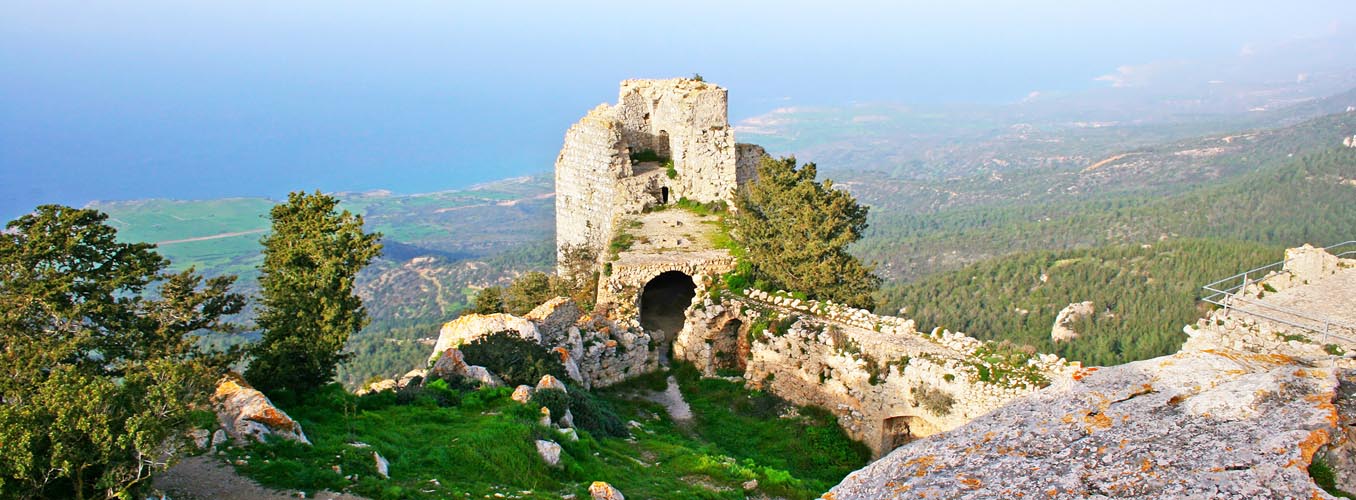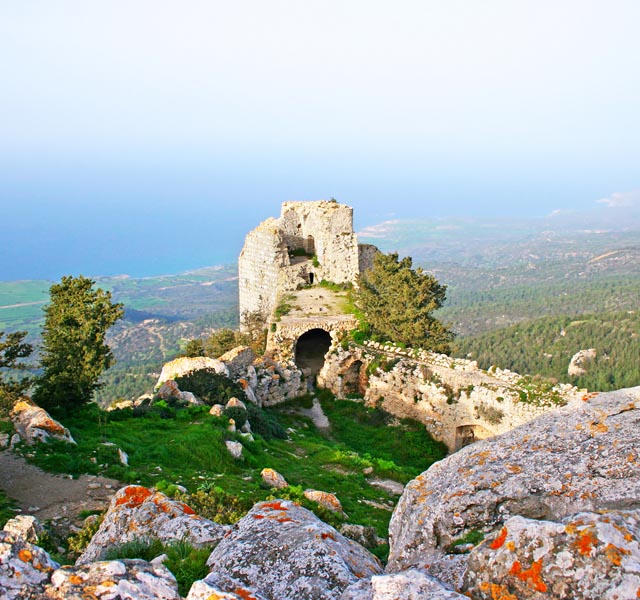Buffavento stands higher, and St. Hilarion can show more perfect ramparts and turrets, but neither recalls so strangely a forgotten age, neither seems to be so thickly peopled with its ghosts, as this lonely ruin on its pillar of rock. No painter’s wildest fancy has pictured anything so fantastic as these Cyprian castles, and, standing at the foot of the last step leading to the gate of Kantara, and involuntarily recalling the fairy-towers of romance, the traveller might imagine it the stronghold of a Sleeping Beauty, untouched by change or time for a thousand years! It is best seen from the north west where the precipice is sheerest, the winding paths seem to cling most dizzily to its face, and the ruins of the interior cannot be seen; but once within the outer gate the illusion partly vanishes in view of broken battlements, although man and horse can still find shelter in many of the chambers.” The name of the castle has several derivations and is referred to in French texts as “Le Candaire”. The name Kantara comes from the Ar Arab words “kandara” meaning a bridge and/or “kandak” meaning castle. According to Cypriot folklore it is called “ta spitia tis reginas” which translates as, the chambers of the Queen. In Turkish it is “yuz bir oda,” a hundred and one rooms. There are many legends as to the outcome of finding the hundred and first room and they vary from the discovery of long buried treasure, to the searcher being suddenly transported to Paradise.








